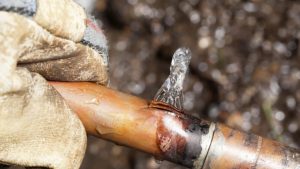 Thawing a frozen water pipe quickly is crucial. However, it is equally important to ensure you thaw a frozen pipe correctly. Here are top tips that will help you get water flowing and help you avert the crisis of a burst pipe or potentially damaging floods in your home.
Thawing a frozen water pipe quickly is crucial. However, it is equally important to ensure you thaw a frozen pipe correctly. Here are top tips that will help you get water flowing and help you avert the crisis of a burst pipe or potentially damaging floods in your home.
Tip #1: Locating the Frozen Pipe
Thawing frozen pipes starts with determining which pipe or pipes have frozen. First, turn on all water faucets. If no water pours or just a little of it trickles, then you should know that the pipe leading to the valve is frozen. And, if the pipe is exposed, like in the basement, under the sink, or on the exterior of your house, you could see the frozen part of the pipe. Frozen pipes usually have frost on them or could have a small bulge.
Tip #2: Open the Faucet
Before you can commence any attempts to thaw frozen pipes, you will need to open all faucets which the pipe delivers water into. You should open both the cold and hot handles in this case. This is a good way to release the pressure in the system, and it will let water escape when you start to thaw your frozen pipe.
Tip #3: Where Should You Begin?
If you are doing the thawing on your own, you should start the process close to the faucet and work your way slowly down the blockage point. This aids in ensuring that the steam and melting ice escape via the open section. If you begin the process nearer to the blockage, the melting ice will probably get stuck behind your blockage, create more pressure in your pipes and increase the chances of your pipe bursting.
Tip #4: Thawing the Exposed Pipes
If your frozen pipe is in an area that you can access easily, there are numerous options for trying to thaw the pipe. You should not stop applying heat until the water running through the faucet runs at full strength.
Here are your options for thawing exposed pipes.
- A Hair Dryer: A hair dryer is the easiest way to thaw a frozen pipe. Just turn on your dryer and point its heat at the frozen pipe, beginning with the section near the faucet.
- Heat Lamp: Another good way to thaw pipes is with a heat lamp. You should, however, position this device in a manner that the heat reaches the frozen pipe. The indirect heat aids in quickly thawing pipes.
- Hot Towels: Wrapping towels that have been dipped in hot water around frozen pipes is another easy way to thaw, and it helps to thaw blockages slowly.
Here’s a video from Ace Hardware which explains how to thaw a frozen pipe…
We hope that these tips on thawing frozen pipes have helped you. However, if you need professional pipe repair services for a frozen or burst pipe then call Plumbing Emergency Rescue and we’ll send a plumber out to you quickly.
